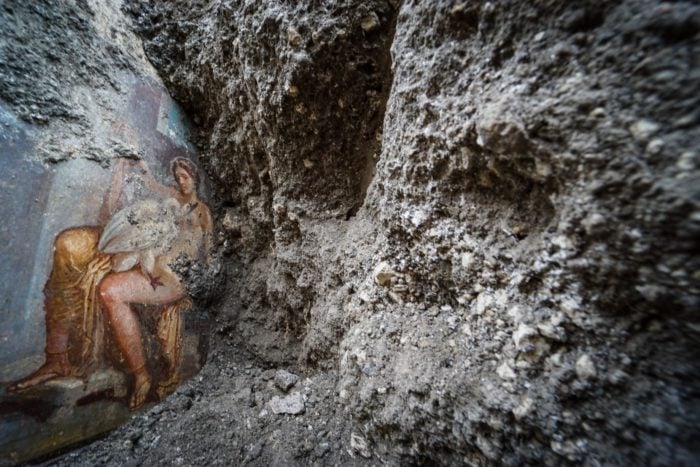
An ancient fresco portraying an ancient Greek myth discovered in Pompeii in 2018 is one of the highlights of the ruins of the city buried by the 79 A.D. eruption of Mount Vesuvius.
The fresco is inside a “domus” or a home belonging to the upper class of society at the time. It is believed to have belonged to a rich tradesman who desired to decorate his house with artwork inspired by Greek and Roman myths as a gesture of demonstrating his education and wealth.
Fresco in Pompeii depicts the Greek myth of Leda and the Swan
The fresco depicts the ancient Greek myth of Leda and the Swan. This is an erotic myth in which the god Zeus, in the form of a swan, seduces (or, according to other variations of the tale, rapes) Leda, the Aetolian princess who later became Queen of Sparta.
According to later Greek mythology, Leda bore Helen and Polydeuces, children of Zeus, while at the same time bearing Castor and Clytemnestra, children of her husband Tyndareus, the King of Sparta. According to many versions of the story, Zeus took the form of a swan and raped Leda on the same night she slept with her husband King Tyndareus.
Especially in art, the degree of consent by Leda to the relationship seems to vary considerably; there are numerous depictions, for example by Leonardo da Vinci, that show Leda affectionately embracing the swan, as their children play.
The fresco found in Pompeii is unique in that it shows Leda differently than she has been previously depicted, Pompeii’s chief archeologist Massimo Osanna told CNN.
“It sends a message of sensuality. It means, ‘I am looking at you and you are looking at me while I am doing something very, very special’,” Osanna said. “It is very explicit. Look at her naked leg, the luxurious sandal; it is a message of beauty and also a message of sensuality.”
The provocative scene from ancient Greek mythology is depicted on a 13 by 18-inch bedroom wall mural. It was uncovered during maintenance work in the Regio V section of the archeological dig.
Pompeii, located in Campania, southern Italy, is an open-air museum where visitors can easily view the shockingly vivid remnants of the complete devastation of the city after the violent volcanic eruption. Nearby Mt. Vesuvius is still an active volcano, although it is currently dormant.
It is thought that between 10,000 and 20,000 people lived in this decadent seaside enclave when the Vesuvius sprang to life after more than a thousand years of dormancy. No one has ever established a credible figure for how many perished.
See all the latest news from Greece and the world at Greekreporter.com. Contact our newsroom to report an update or send your story, photos and videos. Follow GR on Google News and subscribe here to our daily email!



